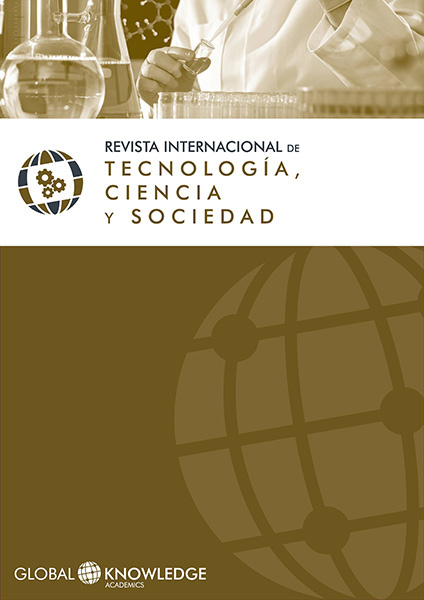Smart Drugs: from therapy to transhumanism
DOI:
https://doi.org/10.37467/gka-revtechno.v7.1659Keywords:
Cognitive enhancement, Nootropics, Normalcy, Pathology, BioenhancementAbstract
Enhancing human cognitive capacities is one of the central axes of transhumanist proposals. In recent decades, halfway between the actual and the possible, another way of approaching human mind enhancement has appeared: smart drugs —also known as cognitive enhancers or nootropics— psychopharmaceuticals that promise an improvement in cognition, memory, intelligence, attention, concentration... These drugs are currently used in the therapeutic field, but many think that the barriers between therapy and human enhancement are fading away. This paper presents three smart drugs —methylphenidate, modafinil and pyracetam— and reflects on the limits between therapy and enhancement, placing special emphasis on the axiological problems entailed.
References
Aragona, M. (2009). About and Beyond Comorbidity: Does the Crisis of the DSM Bring on a Radical Rethinking of Descriptive Psychopathology?, Philosophy, Psychiatry and Psychology, 16(1): 29-33. DOI: https://doi.org/10.1353/ppp.0.0214
Berrios, G. E. (2011). Hacia una nueva epistemología de la psiquiatría. (A. Giaccone & M. V. Schmidt, trans.) Buenos Aires: Polemos.
Eisenberg, L. (2007). Commentary with a Historical Perspective by a Child Psychiatrist: When “ADHD” Was the “Brain-Damaged Child.” Journal of Child and Adolescent Psychopharmacology, 17(3), 279–283. https://doi.org/10.1089/cap.2006.0139 DOI: https://doi.org/10.1089/cap.2006.0139
Escohotado, A. (1998). Historia General de las Drogas. Madrid: Espasa Calpe.
Frances, A. (2014). Saving Normal: an insider’s revolt against out-of-control psychiatric diagnosis, DSM-5, big pharma, and the medicalization of ordinary life. New York: HarperCollins.
Giurgea, C. (1982). The Nootropic Concept and Its Prospective Implications, Drug Development Research, 2: 441-446. DOI: https://doi.org/10.1002/ddr.430020505
Gouliaev, A. H. and Sening, A. (1994). Piracetam and other structurally related nootropics, Brain Research Reviews, 19(2): 180-222. https://doi.org/10.1016/0165-0173(94)90011-6 DOI: https://doi.org/10.1016/0165-0173(94)90011-6
Kendell, R., & Jablensky, A. (2003). Distinguishing between the validity and utility of psychiatric diagnoses. American Journal of Psychiatry, 160(1), 4–12. https://doi.org/10.1176/appi.ajp.160.1.4 DOI: https://doi.org/10.1176/appi.ajp.160.1.4
Kramer, P. D. (1997). Listening to Prozac. A Psychiatrist Explores Antidepressant Drugs and the Remaking of the Self. New York: Penguin Group.
López-Muñoz, F. & Álamo, C.G. (2007). Historia de la psicofarmacología. Tomo 1. De los orígenes de la medicina científica: sobre los pilares biológicos del nacimiento de la psicofarmacología. Buenos Aires: Editorial Médica Panamericana.
Malykh A. G. and Sadaie, M. R. (2010). Piracetam and Piracetam-Like Drugs: From Basic Science to Novel Clinical Applications to CNS Disorders, Drugs, 70 (3): 287-312. DOI: https://doi.org/10.2165/11319230-000000000-00000
Marková, I. and Berrios, G. (2012). Epistemology of Psychiatry. Psychopathology, 45(4): 220-227. DOI: https://doi.org/10.1159/000331599
Ohler, N. (2016). El gran delirio. (Héctor Piquer Minguijón, trad.). Barcelona: Editorial Crítica.
Sanjuán, J., (2016). ¿Tratar la mente o tratar el cerebro? Hacia una integración entre psicoterapia y psicofármacos. Bilbao: Desclée de Brouwer.
Schermer, M. and Bolt, I. (2011). What’s in a Name? ADHD and the Gray Area between Treatment and Enhancement. In J. Savulescu, R. ter Meulen, & G. Kahane (eds.), Enhancing Human Capacities (pp. 179–193). Oxford: Oxford University Press. DOI: https://doi.org/10.1002/9781444393552.ch12
Gyngell, C. & Selgelid, M. J. (2016). Human Enhancement: Conceptual Clarity and Moral Significance. In S. Clarke, J. Savulescu, C. A. J. Coady, A. Giubilini, & S. Sanyal (eds.), The Ethics of Human Enhancement: Understanding the Debate (pp. 111–126). Oxford: Oxford University Press. DOI: https://doi.org/10.1093/acprof:oso/9780198754855.003.0008
Visser, S. N.; Danielson, M. L.; Bitsko, R. H.; Holbrook, R.; Kogan, M. D.; Ghandour, R. M.; Perou, R. and Blumberg, S. J. (2014). Trends in the Parent-Report of Health Care Provider-Diagnosed and Medicated Attention-Deficit/Hyperactivity Disorder: United States, 2003–2011, Journal of the Americal Academy of Child & Adolescent Psychiatry, 53(1): 34-46. https://doi.org/10.1016/j.jaac.2013.09.001 DOI: https://doi.org/10.1016/j.jaac.2013.09.001
Wakefield, J. C. and Horwitz, A. (2016). Psychiatry’s Continuing Expansion of Depressive Disorder. In J. C. Wakefield & S. Demazeux (eds.), Sadness or Depression? International Perspectives on the Depression Epidemic and Its Meaning (pp. 173–204). Dordrecht: Springer. DOI: https://doi.org/10.1007/978-94-017-7423-9_12
Westcott, K. J. (2005). Modafinil, Sleep Deprivation, and Cognitive Funcion in Military and Medical Settings, Military Medicine, 170 (4): 333-335. DOI: https://doi.org/10.7205/MILMED.170.4.333
Downloads
Published
How to Cite
Issue
Section
License
Those authors who publish in this journal accept the following terms:
- Authors will keep the moral right of the work and they will transfer the commercial rights.
- After 1 year from publication, the work shall thereafter be open access online on our website, but will retain copyright.
- In the event that the authors wish to assign an Creative Commons (CC) license, they may request it by writing to publishing@eagora.org








